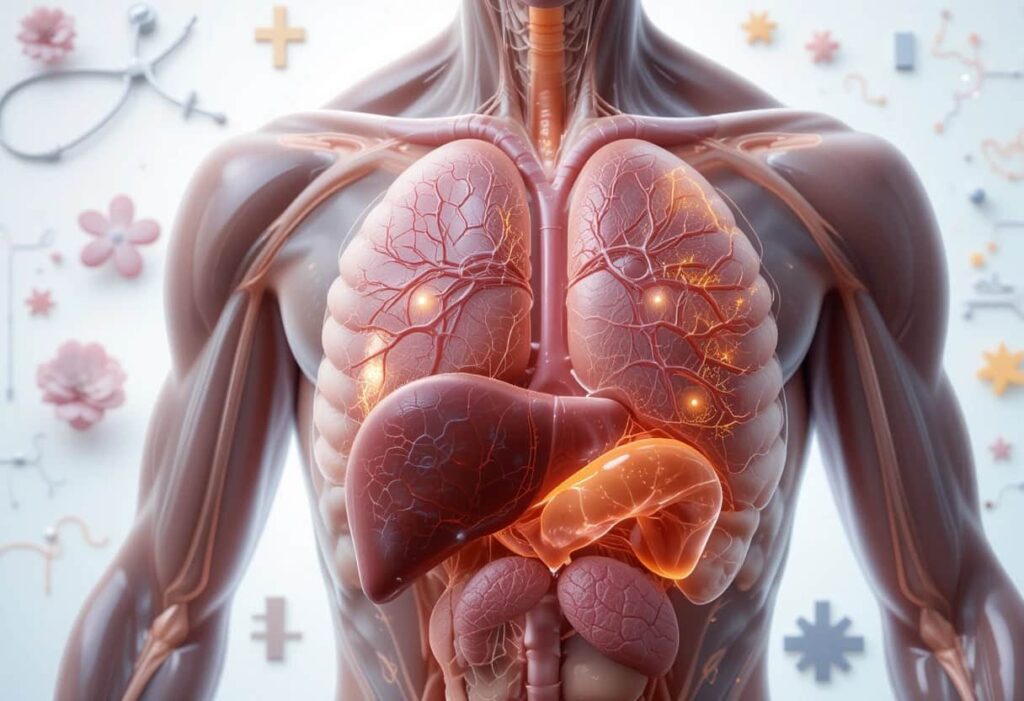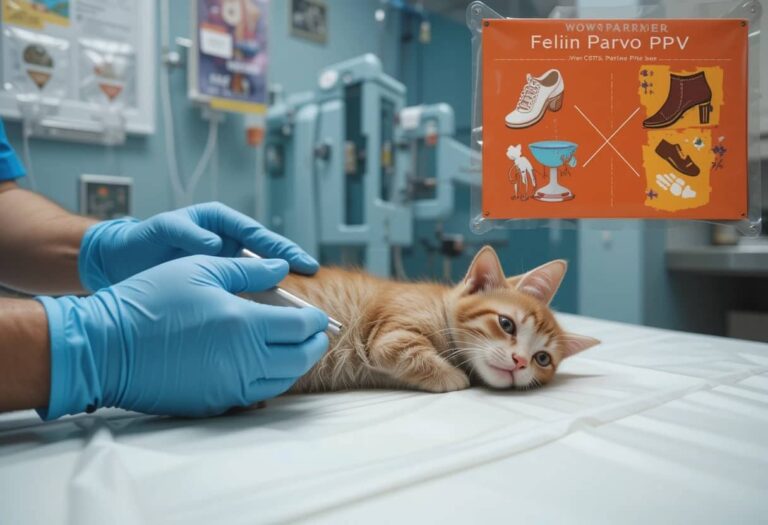Is Jaundice Contagious Disease – Shocking Facts You Shouldn’t Ignore!
Jaundice is one of the most noticeable signs of liver dysfunction. It manifests through the yellowing of the skin, eyes, and mucus membranes due to an excessive buildup of bilirubin, a yellow pigment produced when red blood cells break down. While many associate jaundice with serious illness or assume it’s infectious, the reality is more nuanced.
This article will help you understand jaundice thoroughly: what causes it, whether it spreads from person to person, and how to approach it both medically and personally. Using plain language and updated research, we will also examine which underlying conditions may carry infectious risk and how jaundice relates to broader liver health.
What Makes Jaundice a Symptom and Not a Disease?
It’s important to understand that jaundice is not a standalone disease. Instead, it’s a symptom that signals an issue affecting the liver, bile ducts, or gallbladder. What makes it concerning is not jaundice itself but the condition causing it.

Bilirubin is processed in the liver. When the liver fails to break it down properly, due to obstruction, infection, inflammation, or cell damage, it builds up in the body. This accumulation leads to the yellowish appearance seen in people with jaundice. The presence of jaundice should always prompt further medical evaluation.
Is Jaundice a Contagious Disease or a Misunderstood Symptom?
No, jaundice itself is not a contagious disease. It does not spread through physical contact, airborne particles, shared utensils, or proximity. You cannot contract jaundice by being around someone who has it. However, this is where it’s essential to go deeper. While jaundice isn’t contagious, some illnesses that cause jaundice are infectious. This distinction is key and often misunderstood by the general public.
Certain viral infections, such as hepatitis A, B, or C, can be passed from person to person and may lead to jaundice as a symptom. Recognizing the underlying cause is important not only for treatment but also for preventing unnecessary panic. A person may appear jaundiced, but that doesn’t automatically mean they pose a health risk to others.
What is the main cause of jaundice?
- Liver diseases: Jaundice often results from liver conditions like hepatitis, cirrhosis, or alcoholic liver disease. These illnesses damage liver cells, reducing their ability to process and clear bilirubin from the bloodstream, leading to its buildup and causing the characteristic yellowing of the skin and eyes.
- Hemolysis: Increased breakdown of red blood cells, known as hemolysis, leads to excess bilirubin production. The liver may be unable to process the large amount quickly enough. This imbalance raises bilirubin levels in the blood, resulting in jaundice symptoms like yellowing skin and eyes.
- Blocked bile ducts: Conditions such as gallstones, tumors, or inflammation can block bile ducts, preventing bile and bilirubin from leaving the liver properly. This blockage causes bilirubin to accumulate in the bloodstream, leading to jaundice and often accompanied by dark urine, pale stools, and itching.
- Genetic disorders: Certain inherited conditions, like Gilbert’s syndrome or Crigler-Najjar syndrome, affect the liver’s ability to process bilirubin efficiently. Even mild forms can cause periodic increases in bilirubin levels, leading to visible jaundice, especially during times of stress, illness, fasting, or exertion.
- Newborn jaundice: Many newborns experience jaundice because their immature livers are not fully capable of processing bilirubin efficiently. This condition is usually temporary and resolves with time or light therapy, but in severe cases, it needs medical attention to prevent complications like brain damage.
When the Underlying Cause Can Be Contagious?
Some diseases that lead to jaundice are indeed communicable. In particular, viral forms of hepatitis, such as Hepatitis A, B, and C, can spread from one person to another.
Here’s a table to better illustrate which causes of jaundice are contagious and which are not:
| Cause of Jaundice | Contagious? | Transmission Route |
| Hepatitis A | Yes | Fecal-oral route (contaminated food/water) |
| Hepatitis B & C | Yes | Blood and bodily fluids |
| Alcoholic Liver Disease | No | Not contagious |
| Gallstones | No | Not contagious |
| Autoimmune Hepatitis | No | Not contagious |
| Genetic Disorders (e.g., Gilbert’s) | No | Inherited, not infectious |
| Newborn Jaundice | No | Developmental, not contagious |
As shown, it’s not the jaundice that spreads—it’s the disease behind it that may be communicable in some cases.
Can jaundice spread from one person to another?
Jaundice itself is not contagious—it’s a symptom, not a disease. It happens when there’s too much bilirubin in the blood, causing yellowing of the skin and eyes. However, certain underlying causes of jaundice, like viral hepatitis A, B, or C, can be contagious.
These viruses spread through contaminated food, water, blood, or bodily fluids. Good hygiene, vaccination, and avoiding risky behaviors can help prevent infection. So while you can’t “catch” jaundice directly, you can catch infections that may lead to it. Always consult a doctor for proper diagnosis and care. Early treatment can prevent serious liver damage and promote faster recovery.
What Are the Non-Contagious Triggers of Jaundice?
A significant number of jaundice cases stem from non-infectious causes. These may include liver damage from alcohol, inherited conditions, blocked bile ducts, or even certain medications. Let’s explore a few in more detail:
Non-Contagious Triggers of Jaundice:
A significant number of jaundice cases stem from non-infectious causes. These conditions, while serious, do not spread from person to person and are often related to lifestyle, genetics, or mechanical blockages in the body. Let’s take a closer look at some of the most common non-contagious triggers.
Alcoholic Liver Disease:
Excessive alcohol consumption over time can lead to liver inflammation, known as hepatitis, and eventually to scarring of the liver tissue or cirrhosis. This damage impairs the liver’s ability to process bilirubin, resulting in jaundice. Though common, this type of jaundice is not infectious and stems purely from internal liver damage due to alcohol use.
Gilbert’s Syndrome:
Gilbert’s Syndrome is a benign genetic disorder where the liver doesn’t process bilirubin efficiently. It’s a lifelong condition but typically causes only mild, occasional jaundice with no serious health effects. It requires no treatment and is not contagious, as it is inherited and does not result from infection or exposure to external pathogens.
Gallstones and Obstructions:
Gallstones can obstruct the bile ducts, preventing bile and bilirubin from being properly excreted into the digestive tract. This physical blockage leads to a buildup of bilirubin in the bloodstream, causing jaundice. This condition is mechanical and has no infectious component, meaning it cannot be passed on to others through any means.
Newborn Jaundice:
Newborn jaundice is extremely common, particularly in premature infants. It occurs because a baby’s liver is not fully developed and cannot efficiently process bilirubin. The condition usually resolves on its own or with phototherapy. It is not caused by infection and does not pose a contagion risk to others, including parents or caregivers.
Also read: Arranie Healthsciencesforum – Connect, Learn, Succeed!
Contagious Diseases That Lead to Jaundice – Doctor-Approved Insights!
Let’s focus on the contagious causes of jaundice. These are illnesses that not only affect liver function but can also be passed from one person to another. Understanding these infections helps correct common misconceptions and highlights when jaundice could signal something infectious.
Hepatitis A:
Hepatitis A is a viral infection primarily spread through contaminated food or water. It often occurs in regions with poor sanitation and hygiene. This virus can cause acute liver inflammation, leading to jaundice in both adults and children. While preventable through vaccination, it remains a significant public health concern in developing countries.
Hepatitis B and C:
Hepatitis B and C are more severe forms of liver infection and are spread through blood, unprotected sex, shared needles, or childbirth. These viruses can lead to chronic liver damage, cirrhosis, or even liver cancer. Both types often result in long-term jaundice and require antiviral treatment. They are contagious but preventable and manageable.
Leptospirosis and Malaria:
Leptospirosis is a bacterial infection spread by contact with water contaminated by animal urine, especially in flood-prone or rural areas. Malaria, on the other hand, is a parasite-borne disease transmitted by mosquitoes. Both can affect the liver and lead to jaundice as a symptom. While less common, they require urgent medical attention.
Can I hug a jaundice patient?
Yes, you can hug a jaundice patient safely. Jaundice itself is not contagious—it’s just a symptom caused by excess bilirubin in the blood, leading to yellowing of the skin and eyes. The act of hugging does not spread jaundice. However, if the underlying cause is an infectious disease like hepatitis A, B, or C, you still won’t catch it through casual contact like hugging.
Hepatitis spreads through contaminated food, water, blood, or sexual contact. Practicing good hygiene and understanding transmission routes helps keep everyone safe and reassured. Always offer emotional support to help them feel cared for and less isolated.
Key Symptoms of Jaundice – Could You Be Overlooking Them!

- Yellow Skin & Eyes: The most recognizable symptom, yellowing of the skin and whites of the eyes, occurs due to excess bilirubin in the blood. This discoloration usually begins in the face and moves downward as bilirubin levels increase in the body.
- Dark Urine & Pale Stools: Dark-colored urine often appears due to high bilirubin levels, while stools may become unusually light or clay-colored. These signs suggest that bile is not properly reaching the intestines, usually due to liver issues or bile duct blockage.
- Fatigue & Itching: Persistent tiredness and full-body itching are common in people with jaundice. These symptoms occur as a result of liver dysfunction and the accumulation of bile salts under the skin, which can lead to constant discomfort and disturbed sleep.
- Nausea & Appetite Loss: Liver inflammation often leads to digestive problems like nausea, vomiting, and a decreased appetite. These symptoms may also contribute to unintentional weight loss and nutritional deficiencies if jaundice remains untreated over time.
- Abdominal Pain & Fever: Pain or swelling in the upper right side of the abdomen can indicate liver enlargement or gallbladder issues. A fever may also occur if jaundice is caused by an infection such as hepatitis or leptospirosis, requiring prompt medical attention.
How Do Doctors Diagnose Jaundice Accurately?
Medical professionals rely on several diagnostic tools to determine whether jaundice is present and to uncover its root cause. Each method plays a specific role in evaluating liver function, identifying infections, or locating blockages.
Blood Tests:
Blood tests are the first step in confirming jaundice. They measure bilirubin levels, liver enzymes like ALT and AST, and may also screen for viral infections such as hepatitis A, B, or C. These tests help assess liver function and detect inflammation, damage, or infection at an early and treatable stage.
Imaging Tests:
Doctors may order imaging like an ultrasound, CT scan, or MRI to visually inspect the liver, gallbladder, and bile ducts. These scans help detect blockages, tumors, stones, or structural abnormalities. Imaging is especially useful when jaundice is caused by physical obstructions or liver enlargement that can’t be identified through blood tests alone.
Liver Biopsy:
When imaging and blood tests do not reveal the cause, a liver biopsy may be performed. A small tissue sample is taken and examined under a microscope to check for chronic liver diseases, cirrhosis, cancer, or autoimmune disorders. This test provides detailed insight into the liver’s cellular structure and long-term health.
Also read: Does Periodontal Disease Go Away – Real Facts You Need Today!
How Is Jaundice Treated Based on Its Underlying Cause?
Jaundice itself doesn’t need treatment—it’s the cause that does. Let’s break down treatment approaches:
| Underlying Cause | Treatment Option |
| Hepatitis A | Rest, fluids, supportive care |
| Hepatitis B & C | Antiviral medications, regular monitoring |
| Gallstones | Surgery (cholecystectomy) or endoscopic removal |
| Alcoholic Liver Disease | Alcohol cessation, nutritional therapy |
| Newborn Jaundice | Phototherapy or observation |
| Autoimmune Hepatitis | Corticosteroids and immunosuppressants |
Your doctor’s goal will be to treat the illness, reduce bilirubin buildup, and restore liver function.
Can Jaundice Be Prevented?
Yes, jaundice can often be prevented by taking steps to protect your liver and avoid exposure to infectious or harmful substances. Key preventive measures include getting vaccinated against hepatitis A and B, avoiding alcohol abuse, maintaining good hygiene, and practicing safe sex.
It’s also important to eat a balanced diet, stay hydrated, and avoid sharing personal items like razors or needles. Using medications responsibly and washing hands regularly, especially when handling food, can also lower your risk. Overall, liver-friendly habits are essential for preventing jaundice and supporting long-term health.
How Long Does Jaundice Last?
The duration of jaundice depends on the condition causing it. Acute infections may resolve within a few weeks, while chronic liver diseases can cause persistent or recurring jaundice. In newborns, jaundice typically fades within 2–3 weeks. Chronic cases (e.g., cirrhosis) require long-term management.
Recovery time also depends on how early treatment begins and the individual’s overall health. Some viral hepatitis cases may take months to fully resolve. If left untreated, underlying liver damage can lead to complications and prolonged jaundice symptoms.
How Can You Manage Life with Jaundice Effectively?
Managing life with jaundice involves following your doctor’s advice carefully, avoiding alcohol completely, and keeping a close eye on your liver function through regular medical checkups. Early diagnosis and proper treatment can make most cases manageable.
It’s also important to stay hydrated, eat a liver-friendly diet, and avoid self-medicating. Keeping your medical records organized can support long-term care—digital tools like Health-e or similar health locker apps make it easy to track symptoms, test results, and treatment progress, helping both you and your healthcare provider stay informed.
Also read: Do Cats Get Parvo Disease – Shocking Truth!
What Are the Common Myths About Jaundice?
Jaundice is often misunderstood, leading to fear, confusion, and stigma. Clearing up these misconceptions is important for spreading awareness and encouraging timely treatment. Below are some common myths—and the actual truths behind them:
| Myth | Truth |
| Jaundice spreads through touch | ❌ It doesn’t—jaundice itself is not contagious. Only certain viral infections, like hepatitis A, B, or C, that may cause jaundice are contagious. |
| All jaundice indicates liver failure | ❌ Not true—some cases, like Gilbert’s syndrome or newborn jaundice, are mild and non-life-threatening. |
| Jaundice is always dangerous | ❌ Many cases resolve on their own, especially if the underlying issue is identified and treated early. |
| Babies with jaundice are seriously ill | ❌ Most newborns with jaundice recover fully within weeks, especially with light therapy or close monitoring. |
Understanding the facts helps reduce fear, eliminate misinformation, and promote healthier responses to jaundice, especially in communities where stigma is common.
FAQs:
1. Can stress or anxiety cause jaundice?
No, stress and anxiety do not directly cause jaundice. However, they can weaken the immune system over time, making the body more susceptible to infections, including those that affect the liver. Jaundice is typically the result of liver dysfunction, not emotional or mental health conditions.
2. Is jaundice only a sign of liver disease?
Not always. While jaundice commonly indicates liver-related issues, it can also occur due to problems in the gallbladder, bile ducts, or certain blood disorders like hemolytic anemia. A thorough medical evaluation is needed to pinpoint the exact cause and begin appropriate treatment.
3. Can a healthy person suddenly develop jaundice?
Yes, even individuals without a history of liver disease can suddenly develop jaundice. Acute infections such as hepatitis A or food poisoning can cause a rapid onset of symptoms. Drug reactions, gallstones, or bile duct blockages can also trigger jaundice in otherwise healthy individuals.
4. Is sunlight helpful for treating jaundice?
Sunlight is effective for treating newborn jaundice because it helps break down excess bilirubin in the skin. However, for adults, sunlight does not treat the root cause of jaundice. Adults need proper diagnosis and medical treatment tailored to the underlying condition.
5. Can dietary supplements cure jaundice?
No, dietary supplements alone cannot cure jaundice. While some may support liver health, such as milk thistle or turmeric, they should not replace medical treatment. In some cases, self-medicating with unapproved supplements can worsen liver problems. Always consult a healthcare provider before use.
Conclusion:
Jaundice itself is not a contagious disease; however, certain underlying causes like hepatitis A, B, or C can be infectious. Understanding this distinction helps prevent unnecessary fear and promotes better health decisions. While many cases of jaundice are linked to non-contagious factors such as genetics, alcohol use, or bile duct blockages, others may require careful monitoring and isolation.
Effective management involves timely diagnosis, following medical advice, and maintaining a liver-friendly lifestyle. With early intervention, most jaundice cases can be successfully treated, controlled, or even prevented through vaccination, hygiene, and healthy daily habits.
Related post:






